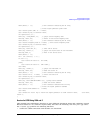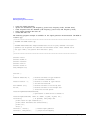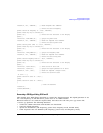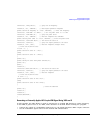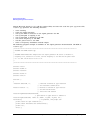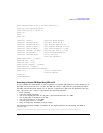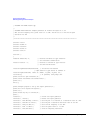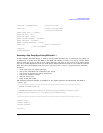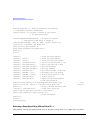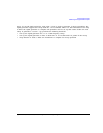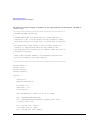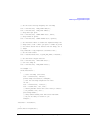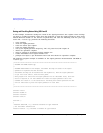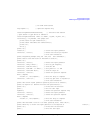
Agilent N518xA, E8663B, E44x8C, and E82x7D Signal Generators Programming Guide 83
Programming Examples
GPIB Programming Interface Examples
viPrintf(vi, "OUTP:STAT ON\n"); // Turns on RF output
printf("\n"); // Prints a carriage return
// Print user information
printf("Power level : -15 dBm\n");
printf("FM state : on\n");
printf("RF output : on\n");
printf("Carrier Frequency : 900 MHZ\n");
printf("Deviation : 100 kHZ\n");
printf("Internal modulation : 5 kHz\n");
printf("\n"); // Print a carrage return
// Close the sessions
viClose(vi);
viClose(defaultRM);
}
Generating a Step-Swept Signal Using VISA and C++
In this example the VISA library is used to set the signal generator for a continuous step sweep on
a defined set of points from 500 MHz to 800 MHz. The number of steps is set for 10 and the dwell
time at each step is set to 500 ms. The signal generator will then be set to local mode which allows
the user to make adjustments from the front panel. Launch Microsoft Visual C++ 6.0, add the required
files, and enter the following code into your .cpp source file. visaex7.cpp performs the following
functions:
• clears and resets the signal generator
• sets up the instrument for continuous step sweep
• sets up the start and stop sweep frequencies
• sets up the number of steps
• sets the power level
• turns on the RF output
The following program example is available on the signal generator Documentation CD-ROM as
visaex7.cpp.
//****************************************************************************************
// PROGRAM FILE NAME:visaex7.cpp
//
// PROGRAM DESCRIPTION:This example will program the signal generator to perform a step
// sweep from 500-800 MHz with a .5 sec dwell at each frequency step.
//
//****************************************************************************************
#include <visa.h>
#include "StdAfx.h"
#include <iostream>
void main ()



